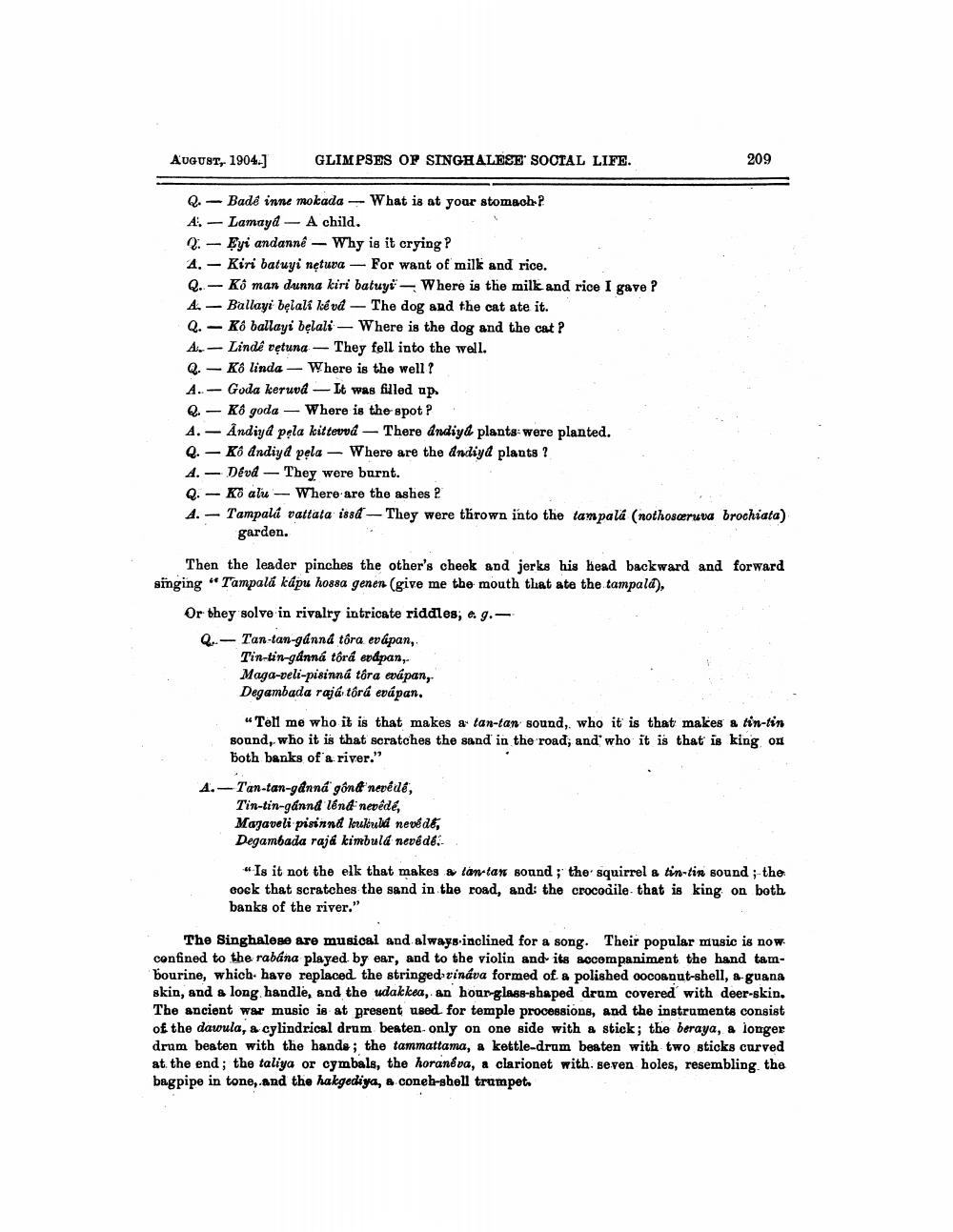________________
AUGUST, 1904.)
GLIMPSES OP SINGH ALBEE SOOTAL LIFE.
209
Q. - Bade inne mokada -- What is at your stomach? A. - Lamayd - A child. Q: - Eyi andanne — Why is it crying?
Kiri batuyi netuva - For want of milk and rice. Q. - Ko man dunna kiri batuyt - Where is the milk and rice I gave ? - Ballayi belali kévá - The dog and the cat ate it.
Kó ballayi belali - Where is the dog and the cat ? A.- Lindé detuna - They fell into the well.
Kô linda - Where is the well? - Goda keruvd - It was filled up Q. - K8 goda - Where is the spot ?
Andiyd pşla kittevvá – There andiya plants were planted. Q. - Kandiya pela - Where are the Andiyd plants ?
- Devd - They were burnt. Q. - Ko alu - Where are the ashes 2 A. - Tampali vattata issd - They were thrown into the tampala (nothosceruva brochiata)
garden.
Then the leader pinches the other's cheek and jerks his head backward and forward singing "Tampalá kápu ho88a genen (give me the mouth that ate the tampald),
Or they solve in rivalry intricate riddles; e. g.Q.- Tan-tan-gánná tôra ev ápan,
Tin-n-gan, tổra emapan, Maga-veli-pisinná tôra evápany Degambada rajá tôrá evapan.
“Tell me who it is that makes a tan-tan sound, who it is that makes a tin-tin sound, who it is that scratches the sand in the road, and who it is that is king on both banks of a river."
4.- Tan-tan-ganna gônt nevédé,
Tin-tin-gánnd lendi nepede, Majaveli pisinnd kukould nevede, Degambada rajd kimbuld nevede.
* Is it not the elk that makes a lan-tan sound ; the squirrel a tin-tin sound ;-the cock that scratches the sand in the road, and the crocodile that is king on both banks of the river."
The Singhalese are musical and always inclined for a song. Their popular music is now confined to the rabána played by ear, and to the violin and its socompaniment the hand tambourine, which have replaced the stringedərináva formed of a polished cocoanut-shell, a-guana skin, and a long handle, and the udakkea, an hour-glass-shaped drum covered with deer-skin. The ancient war music is at present used for temple processions, and the instruments consist of the dawula, a cylindrical drum beaten only on one side with a stick; the beraya, a longer drum beaten with the hands; the tammattama, a kettle-drum beaten with two sticks curved at the end; the taliya or cymbals, the horandva, a clarionet with seven holes, resembling the bagpipe in tone, and the hakgediya, & coneh-shell trumpet.




